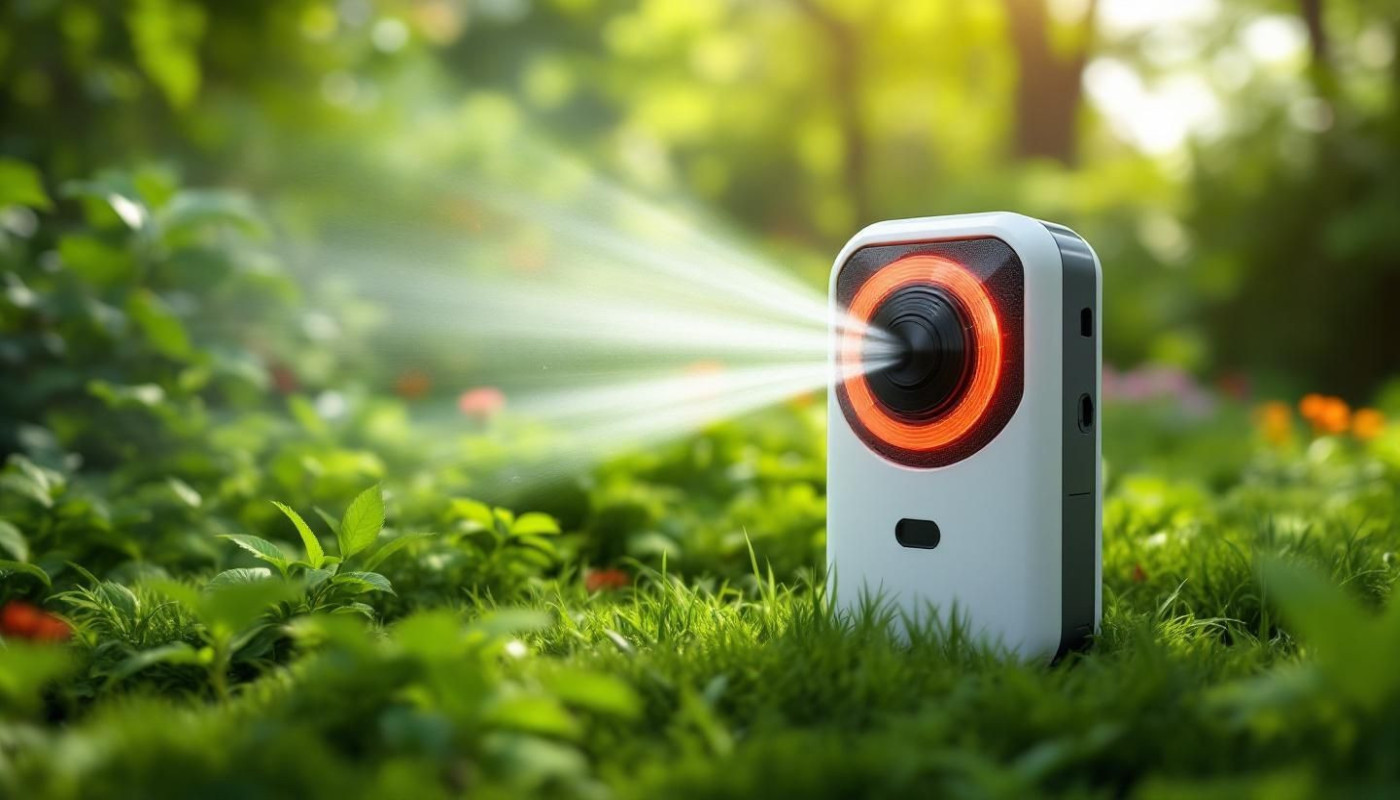Table of contents
Curiosity about the effectiveness of ultrasonic repellents in gardens has grown alongside the desire for humane, chemical-free pest control solutions. These devices, often marketed for their ability to deter common garden intruders, have sparked debate regarding their true impact. Continue reading to uncover the science, practical considerations, and the potential limitations surrounding ultrasonic repellents, and gain a clearer understanding of how these tools may fit into your garden management strategy.
Understanding ultrasonic repellents
Ultrasonic garden repellent devices utilize advanced technology to achieve humane pest control by emitting high-frequency sound waves that are mostly undetectable to humans but are highly disruptive to common garden pests such as rodents, insects, and sometimes stray animals. These devices incorporate a piezoelectric transducer, a component that converts electrical energy into ultrasonic vibrations within a specific frequency range. The resulting high-frequency sound serves as an effective method for pest deterrence, creating an uncomfortable environment for unwanted intruders without resorting to harmful chemicals or traps. Users often select ultrasonic garden repellent solutions for their commitment to garden protection while maintaining ecological balance and safety for pets and children.
The effectiveness of ultrasonic repellents depends greatly on factors such as the placement of the device, the target pest species, and the size of the area requiring protection. While some studies and testimonials support their use for deterring certain pests, results can vary based on real-world conditions, as sound waves are absorbed by obstacles like plants, walls, or furniture. It is advisable to explore reputable sources and products, such as those linked here, to ensure optimal performance and suitability for individual garden environments. By understanding the technology and the science behind frequency range selection, gardeners can make informed decisions to enhance their pest management strategies.
Common garden pests targeted
Ultrasonic deterrent devices are widely marketed to address garden pests including rodents such as mice and rats, larger mammals like deer and raccoons, as well as rabbits. These pest species are notorious for causing significant damage to plants, vegetables, and ornamental gardens, making animal control a priority for effective wildlife management. The core principle behind ultrasonic deterrents is the emission of high-frequency sound waves, which are typically outside the range of human hearing but can be perceived by various animals. Manufacturers often claim that these sounds create an uncomfortable environment, driving away unwanted wildlife without the use of chemicals or physical barriers.
Nevertheless, the effectiveness of sound-based methods varies greatly among different pest species due to differences in their audiogram, a technical term describing the range and sensitivity of hearing in animals. Rodents, for example, usually have a heightened sensitivity to higher frequencies, making them more susceptible to ultrasonic deterrents. In contrast, deer and raccoons possess different hearing ranges, with some frequencies having minimal impact on their behavior. Additionally, habituation is a notable challenge, where animals may become accustomed to repeated sounds over time, reducing the long-term effectiveness of these devices in animal control. In wildlife management, understanding the specific audiogram of targeted pests is fundamental to maximizing the potential of ultrasonic deterrents as part of an integrated approach to garden pest control.
Evaluating real-world effectiveness
Scientific analysis of ultrasonic device effectiveness in gardens has yielded mixed garden results, as demonstrated by a range of field study data and pest control research. Recent research indicates that some ultrasonic repellents can deter specific pests like rodents and small mammals under controlled conditions. Nevertheless, these results often vary widely due to environmental factors such as plant density, ambient noise, and soil composition, which can interfere with the propagation of ultrasonic waves. Pest habituation is another significant variable; repeated exposure to the same ultrasonic frequencies may lead certain pests to become accustomed to the devices, reducing their deterrent impact over time. Additionally, the layout of the garden—including barriers, elevation, and the presence of water sources—can influence the distribution and reach of ultrasonic emissions, further complicating consistent efficacy. In sum, while ultrasonic repellents hold potential as a supplementary pest management tool, field study outcomes suggest they should be integrated with other strategies for optimal results.
Environmental and safety considerations
Ensuring ultrasonic safety within the garden environment extends beyond pest deterrence to safeguarding non-target species, pets, and children. Ultrasonic repellents are generally regarded as an eco-friendly pest control option because they emit frequencies above the auditory threshold limit of humans, minimizing direct disturbance to people. Pet safety remains a priority; while most domestic animals such as dogs and cats typically do not perceive these frequencies, certain small mammals or exotic pets might be sensitive if exposed at close range or high intensity. Recommendations stress that devices be placed away from areas frequented by vulnerable pets, play spaces, or nesting sites of beneficial fauna to reduce accidental exposure. Non-target species, including pollinators and small wildlife, are unlikely to be affected if manufacturers’ guidelines are observed regarding threshold limit settings and device orientation.
Regulatory bodies and environmental health and safety authorities offer clear guidance on the use of ultrasonic repellents to balance effective pest management and environmental protection. Users are advised to respect local ordinances and manufacturer instructions, positioning units at recommended heights and angles to avoid unintended impacts on non-target species. Periodic monitoring of the garden environment ensures that ultrasonic safety remains intact and eco-friendly pest control practices are upheld. Adhering to these measures maintains both pet safety and overall biodiversity, supporting a harmonious coexistence between garden inhabitants and effective pest deterrence technologies.
Integrating repellents in garden management
Incorporating ultrasonic repellent use into an integrated pest management plan offers a sophisticated garden strategy that aligns with sustainable gardening principles. Adopting a multimodal approach means combining ultrasonic devices with physical barriers such as netting or row covers, and making informed plant selection to deter pests naturally. This approach ensures that no single tactic dominates, reducing the risk of pests developing resistance. Place ultrasonic repellents strategically where pest activity is highest, and routinely adjust their location to prevent habituation. At the same time, choose companion plants with natural pest-repelling properties and maintain healthy soil to support plant resilience. By layering these pest prevention tactics, gardeners create a robust and adaptable system that not only enhances ultrasonic repellent effectiveness but also contributes to long-term ecological balance. This synergy forms the foundation for a resilient and productive garden, minimizing chemical inputs while safeguarding both plants and the broader environment.



